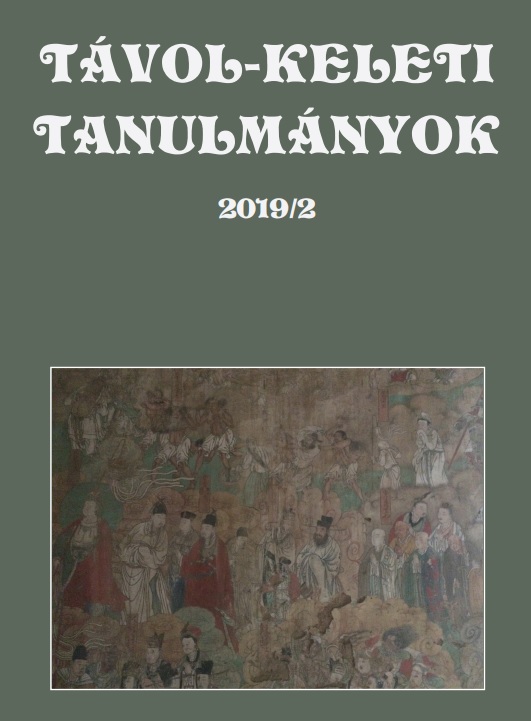Errors in Hungarian translations of Japanese jūdō terminology: A few suggestions for reforming the jargon
Published 2020-10-30
Keywords
- Kōdōkan jūdō,
- jūdō terminology,
- Japanese–Hungarian translation,
- martial arts
How to Cite
Copyright (c) 2020 the author(s)

This work is licensed under a Creative Commons Attribution-NonCommercial 4.0 International License.
Abstract
Kōdōkan jūdō is the first Japanese martial art ever introduced in Hungary, at the beginning of the twentieth century. In order to make jūdō popular among the general public, it was necessary to translate the cryptic Japanese names of the techniques to more familiar Hungarian terms, thus Hungarian jūdōterminology was born. Since then, nearly a century has passed, and partly because of the terminology, (which had no linguistic foundations but was created on the basis of mere observation by Hungarian practitioners), jūdō has drifted away from its authentic Japanese roots. In this study, I introduce the main translational errors affecting the terminology and try to offer some solutions favouring a more accurate Hungarian jūdō-terminology for the future.
References
- Adámy István 2002. Kyokushin karate I: A legerősebb karate alapjai. Debrecen: Lunarimpex.
- Borbély Attila – Jóvér Béla 1991. Szamurájok útján: A budo sportok kézikönyve. Budapest: Sport Kiadó.
- Cselőtei Lajos 1920. A japánrendszerű torna alapgyakorlatai. Budapest: Stephaneum Nyomda Rt.
- Galla Ferenc – Horváth István 1973. Judo övvizsgák. Budapest: Sport Kiadó.
- Galla Ferenc 1969. Cselgáncs (judo) és önvédelem (aikido). Budapest: Sport Kiadó.
- Hancock, Harrie Irving 1903. Japanese Physical Training: The System of Exercise, Diet and General Mode of Living that has made the Mikado’s People the Healthiest, Strongest, and Happiest Men and Women in the World. New York–London: G. P. Putnam’s Sons.
- Hancock, Harrie Irving 1904. Jiu-Jitsu Combat Tricks: Japanese Feats of Attack and Defense in Personal Encounter. New York–London: G. P. Putnam’s Sons.
- Kano, Jigoro 2005. Mind over muscle: Writings from the Founder of Judo. Tokió–London–New York: Kodansha International.
- Kárpáti Gábor Csaba (szerk.) 2005. A Szoga fivérek krónikája. Budapest: Szenzár Kiadó.
- Kelemen István 1984. Ju-jitsu (nem csak) nőknek. Budapest: Sportpropaganda Vállalat.
- Nagy György – Ősze Attila 2002. Judo kyu vizsgák. Mosonmagyaróvár: Delta SE.
- Neidenbach Emil 1931. Testgyakorlás és tudomány. Budapest: Szerzői Kiadás.
- Országos Testnevelési Tanács 1926a. Támadó és védősportok: Cselgáncs (jiu-jitsu). [Testnevelési utasítás II. rész: Testnevelési és Sportágak 6-C.] Budapest: Stádium Sajtóvállalat és Részvénytársaság.
- Országos Testnevelési Tanács 1926b. A görög-római birkózás. [Testnevelési utasítás II. rész: Testnevelési és Sportágak 6-A.] Budapest: Stádium Sajtóvállalat és Részvénytársaság.
- Plavecz Tamás – Bíró Norbert 2012. Új judo kisenciklopédia. Cegléd: E-book Könyvház és Kiadó.
- Plavecz Tamás 1988. Judo kisenciklopédia. Budapest: Hungaria Sport.
- Sasaki Kichisaburo 1907. Djudo: a japán dzsiu-dzsicu tökéletesített módszere. Ford. Speidl Zoltán. Budapest: Hornyánszky.
- Schäfer, Andreas 2006. Judo. Ford. Tóth Péter. Budapest: Cser Kiadó.
- Vincent T. [Vincze Tibor] 1932. „A dzsiu-dzsicu.” In: Pálfy György (szerk.): Sport és játék. Budapest: Enciklopédia, 171–179.
- Vincze Tibor 1957. Cselgáncs (judo). Budapest: Sport Kiadó.
- Zsolt Péter 2007. Japán–Magyar karate szakszótár. Budapest: Hunor.
- Chōjū giga. kawazu to usagi no sumō 蛙と兎の相撲. https://j-art.hix05.com/10choju/choju05.html (2019.09.14.)
- Daigo, Toshiro 2005. Kodokan Judo: Throwing Techniques. Tokió–London–New York: Kodansha International.
- Frühstück, Sabine – Manzenreiter, Wolfram 2001. „Neverland lost: Judo cultures in Austria, Japan, and elsewhere struggling for cultural hegemony” In: Befu, Harumi – Guichard-Anguis, Sylvie (eds.): Globalizing Japan: Ethnography of the Japanese presence in Asia, Europe, and America. London–New York: Routledge, 69–95.
- Gottner Richárd Gábor 2018. A japán jūdō és jūjutsu terminológia magyarra fordításának fejlődése és kérdései. (Mesterszakos szakdolgozat, Károli Gáspár Református Egyetem)
- Gottner Richárd Gábor 2019. „A japán jūdō-terminológia magyarra fordításának változásai a kezdetektől: Avagy djudótól a cselgáncsig” In Doma Petra – Takó Ferenc (szerk.) „Közel, s Távol” IX. Az Eötvös Collegium Orientalisztika Műhely éves konferenciájának előadásaiból 2018. Budapest: Eötvös Collegium, 243–266.
- Green, Thomas A. 2010. „Invented traditions” In: Green, Thomas A. – Svinth, Joseph R. (eds.): Martial Arts of the World: An Encyclopedia of History and Innovation. Santa Barbara: ABC-CLIO, 428–432.
- IOC Media Relations Teams 2020. IOC, IPC, Tokyo 2020 organising committee and Tokyo Metropolitan Government announce new dates for the Olympic and Paralympic games Tokyo 2020. https://www.olympic.org/news/ioc-ipc-tokyo-2020-organising-committee-and-tokyo-metropolitan-government-announce-new-dates-for-the-olympic-and-paralympic-games-tokyo-2020 (2020.04.20.)
- Jisho.org. kaesu 返す. https://jisho.org/word/%E8%BF%94%E3%81%99 (2019.09.13.)
- Jisho.org. kujiku 挫く. https://jisho.org/search/%E6%8C%AB%20%23kanji (2019.10.02.)
- Kano, Jigoro 2013. Kodokan judo. Tokió–London–New York: Kodansha International.
- Kawamura Teizō 川村禎三 – Daigo Toshirō 醍醐敏郎 2000. Waei Taishō Jūdō-yōgo ko-jiten 和英対照柔道用語小辞典 [Kōdōkan New Japanese-English Dictionary of Judo]. Tokió: Kōdōkan.
- Klaudy Kinga 2006. Bevezetés a fordítás elméletébe. Budapest: Scholastica.
- Kōdōkan Jūdō Institute 2017. Jūdō waza meishō ichiran 柔道技名称一覧. http://kodokanjudoinstitute.org/waza/list/ (2019.08.24.)
- Kōdōkan Jūdō Institute 2017. Kōdōkan no dendō 講道館の殿堂. http://kodokanjudoinstitute.org/doctrine/palace/ (2019.09.14.)
- Kremser Péter 2009. Birkózósportunk története: A kezdetektől Trianonig. Szeged: Magánkiadás.
- Mol, Serge 2001. Classical Fighting Arts of Japan: a complete guide to koryu jujutsu. Tokió–London–New York: Kodansha International.
- Nihon sumō kyōkai. kimarite kawazu gake 決まり手・河津掛. http://www.sumo.or.jp/SekitorikunNewTop/kimarite82#ctop (2019.09.14.)
- Szabó Balázs 2012–2013. „A Cselgáncs történeti alapjai: Dzsúdzsucu a japán harcművészeti kutatásban.” In: Kalokagathia 1: 112–125.
- Testnevelési Egyetem 2018. Elhunyt Dr. Galla Ferenc. https://tf.hu/hirek/3204-elhunyt-dr-galla-ferenc (2019.08.24.)
- The British Museum. Soga monogatari zue 曽我物語図絵. https://www.britishmuseum.org/research/collection_online/collection_object_details.aspx?objectId=782925&partId=1 (2019.09.14.)
- Tomiki Kenji 富木謙治 1958. Kōdōkan Goshinjutsu 講道館護身術 [Kōdōkan önvédelmi technikák]. Tokió: Baseball Magazine-sha.
- Uozumi Takashi 魚住孝至 2013. Budō no rekishi to sono seishin 武道の歴史とその精神 [A budō történelme és szellemisége]. Katsuura: Kokusai Budō Daigaku, Budō-sport kagaku kenkyūsho.
- Varrók Ilona (főszerk.) 2015. Japán–magyar nagyszótár. Budapest: Japán Stúdiumok Alapítvány.

